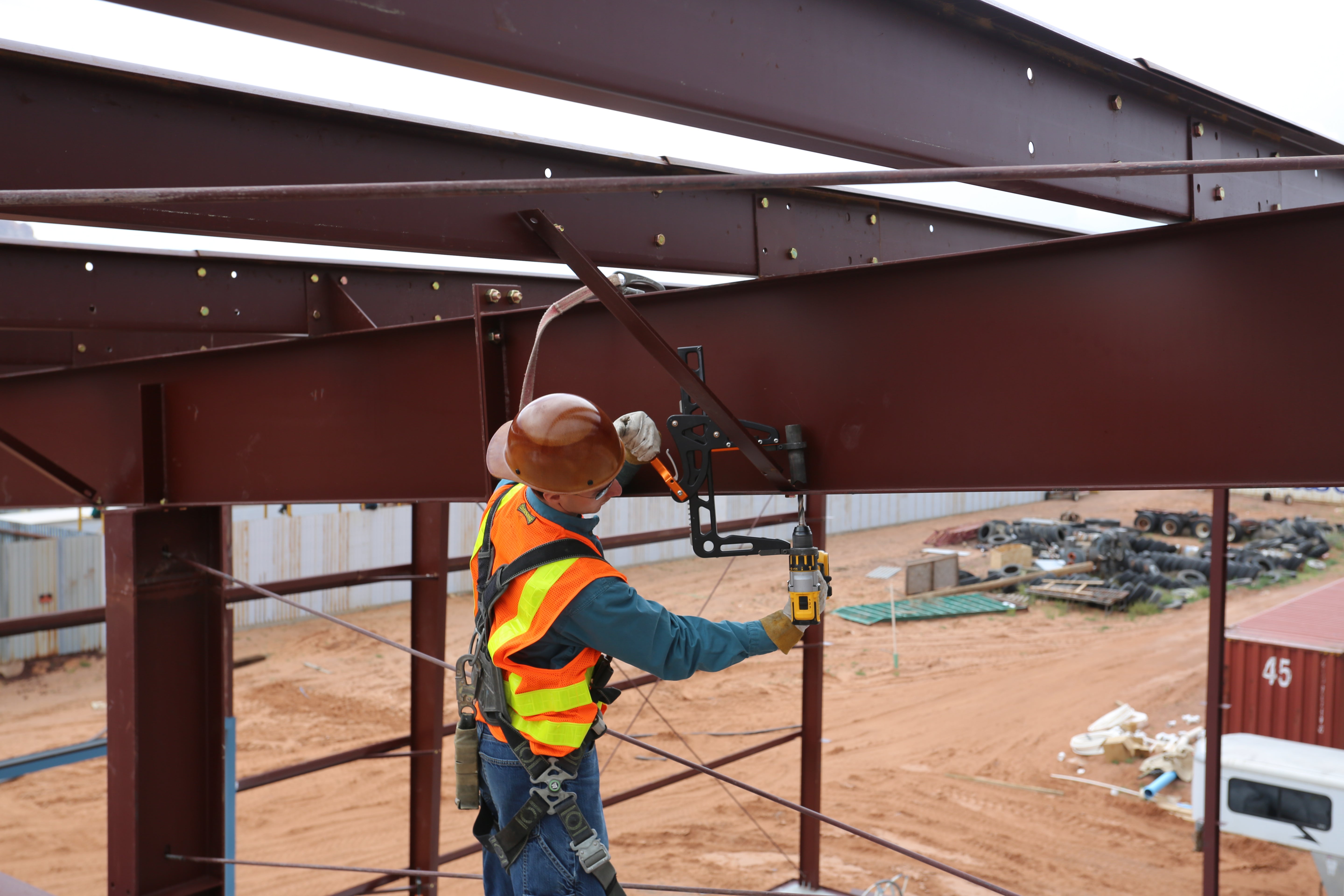Drilling into structural steel beams is one of the most common — and dangerous — tasks in steel erection and fabrication. Whether you’re installing bolted connections, retrofitting brackets, or making adjustments in the field, drilling I-beams can create serious safety risks if done the wrong way.
In this guide, we’ll break down why I-beam drilling is difficult, common mistakes crews make, and the best safety practices and tools for clean, accurate, and safe holes in structural steel.
Why I-Beams Are Hard to Drill
Structural I-beams are designed for strength, not convenience. Unlike flat steel plate, I-beams have curved edges, uneven surfaces, and are often located overhead. That makes drilling with a standard cordless drill or mag drill challenging and unsafe.
- No flat surface for mag drills – Magnetic bases don’t hold on rounded or angled flange surfaces.
- Risky positions – Crews end up leaning, one-handing, or hanging off lifts just to drill a hole.
- Hot work permits – Some crews default to torching holes, which adds fire risk, extra permitting, and downtime.
Safety Tips for Drilling into I-Beams
1. Use a Clamp-On Drill Press
The safest way to drill I-beams is with a clamp-style mobile drill press like the Rapidrill Pro. Instead of relying on a magnetic base, it clamps directly onto the beam, tubing, or angled steel. This means crews can:
- Keep both hands safely on the drill.
- Apply over 1,000 lbs of feed force — without operator strain.
- Drill without needing a perfectly flat surface.
2. Choose the Right Drill Bit
Not all drill bits are created equal. For thick steel beams, use cobalt drill bits or carbide-tipped bits designed for structural steel. If you’re unsure, check out our guide on how to choose the right drill bit for metal vs wood.
3. Always Center Punch First
Marking the hole before drilling helps prevent bit wandering — especially critical on curved I-beam flanges.
4. Apply Coolant or Lubrication
Lubricants reduce heat, extend drill bit life, and improve drilling accuracy.
5. Focus on Operator Safety
- Keep both feet secure on lifts or scaffolds.
- Always keep two hands on the drill.
- Never lean your body weight against the tool.
Benefits of Drilling I-Beams the Right Way
By using the right setup, you’ll save time, improve safety, and extend tool life. Crews that drill correctly can expect:
- Fewer injuries from slips or strains.
- No delays waiting for hot-work permits.
- Cleaner, more accurate holes for bolted connections.
- Faster job completion without rework.
The Bottom Line
Drilling into I-beams doesn’t have to mean unsafe positions, burned bits, or torched holes. With the right equipment, such as the Rapidrill clamp-on drill press, your crew can safely drill through beams, tubing, and angled steel without slowing down the project.
Want to see how it works? Visit the Rapidrill homepage or explore our blog library for more drilling safety tips.



Share:
How to Choose the Right Drill Bit for Metal vs. Wood